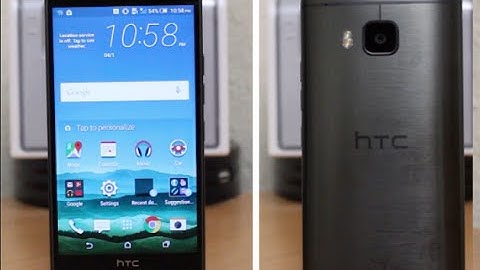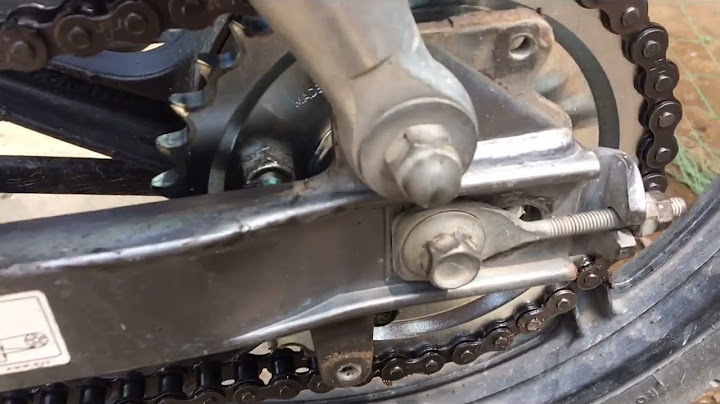I've been using a G402 since 2014, but this year I decided to finally upgrade to wireless after dealing with cable drag for far too long. Note that this mouse is identical to the G403 save for the wireless connectivity. Show I'm very impressed with the build quality and ergonomics of this mouse, thought it is a bit shorter (front to back) than I would like. The shape is very similar to that of the G402, with a slightly higher ridge in the palm arch area and concave buttons instead of concave ones. if the G402 is comfortable to you, you'll likely find this mouse comfortable as well. The weight distribution is a bit different on the G703, with most of the weight focused at the back of the mouse near the optional added weight. One major difference between the G402 and the G703 is two fewer side buttons. Personally this is sort of a let-down, as 4 buttons and a dpi-shift button was a good balance for me. However, the two side buttons (down from 5) and one extra top button (dpi-shift) are much higher quality than the extra buttons on the G402, without the G402's sharp edges. Also notable is the lack of glossy black anywhere on the G703, when it was very prevalent in the G402's angular design. This is a pro for me, as that material collected fingerprints like mad, and the frequent divets in the G402 collected dog hair as well. The G703 is far smoother than the G402 but has some missing buttons that may be important to certain users. Let's talk about wireless. Wireless mice are tricky for gaming, and Logitech has the best wireless implementation that I've ever used. That being said, the input lag *is* noticeable, but definitely not unbearable. I don't play a lot of competitive games, so I may not have the finest-tuned eye for this sort of thing, but I got used to the feel of this mouse after about an hour of gaming with it, and I can really only detect the slight input lag (think 6ms instead of 1ms) when I'm actively looking for it. The battery life is good, but not exceptional. With the high polling rates, sensor quality, and absolutely necessary RGB lighting found on gaming mice, it's natural that the battery life would be lower than other Logitech wireless mice such as the Performance MX or MX Master. The battery lasts around 25 hours as claimed with the lighting on and in heavy use. Most people could probably go a week or so easily without charging, but I would plug it in to charge overnight at least every few days just to be on the safe side. One nice addition on the software side would be a tray indicator for the mouse's battery life, but I guess "the technology isn't there yet." (This whole paragraph is somewhat moot if you have a Powerplay, which I don't). I can't speak to the durability as I haven't had the mouse this long, but I've had a great experience with Logitech's customer service in the past with the 2-year warranty included with their product. I would recommend this mouse to anyone outside of the most hardcore latency-snobs with its comfortable design, pleasing aesthetics, and excellent wireless. That was a much different time in the world of PC gaming peripherals. Larger, heavier devices with customizable weights were the hot new thing. Impressive battery efficiency for wireless peripherals was just starting to emerge into reality. The modern idea of light, small mice that last for days on one battery charge and game at extreme speeds wasn’t even a twinkle in a designers eye yet. Logitech is one of the biggest names in technology, but that doesn’t mean they forget their history. They iterate on their designs every 6 to 18 months just like the rest of the crowd, yes, but they have a larger stable of older designs still on store shelves than their competitors. They don’t give up on something that works just because they’ve released a newer product. Sometimes, I’m not sure why they stick with their classics. I bought the G703 right after it first launched in 2017. Back then, it contained a PixArt 3366 sensor. This review is based on my original unit, which holds a space in my closet as a good backup mouse, and which I still pull out every once in a while when I want to remember how different the market used to be. Note: I bought this mouse with my own money at Best Buy. I bought it so long ago I don’t even remember if I got it at a discount. I don’t get a kickback if you decide to buy one now, and none of the links in this article are affiliate links. If you’d like to read my reviews policy it lives right here. Photo taken by the author. OVERVIEWIf you decide to pick up a G703 today in 2021, you can’t buy the original model. It received two updates over the years. The first one swapped out the PixArt sensor inside and replaced it with Logitech’s newer “HERO” model. The HERO sensor has similar performance to Pixart’s but much better battery efficiency. A more recent revision upgraded the sensor inside to the newer 25,000 DPI HERO model, giving the current version of the mouse a battery rating around 60 hours if you turn the lights off. My ancient model maxes out just over 30, or around 22 hours if I leave the lights on, which I prefer. Logitech refuses to let this forked micro USB cable fade into obscurity, for whatever reason. Photo taken by the author. The G703 sells for a retail price of $99(official site here) putting this mouse up against some serious competition across the board. It does receive frequent discounts, and if you’re planning to pick it up, I’d urge you not to pay full price if you can manage it. In the box, you’ll get the mouse, a USB dongle, an optional extra 10g weight, a USB-A to micro USB cable with Logitech’s classic weird fork on the end, and a little dock that you can use to place the dongle closer to your mouse. This mouse was also one of the first to support Logitech’s Powerplay wireless charging system, and it still does today. However, that requires the use of a special mouse mat and a puck that sits inside the compartment for the optional weight. Photo taken by the author. PERFORMANCEEven after four years of heavy use and occasional closet storage, my G703 still performs like a champ. The sensor inside tracks well in spite of its unusual off-angle placement, and the switches under the buttons haven’t given out yet. It may not have most of the features people look for in modern mice, but it still performs just as well as I’d expect from a much newer model. Logitech nailed it even with the earliest iterations of their “Lightspeed” wireless tech, and it feels indistinguishable from using a wired mouse. The ~100g weight of the mouse is noticeable, and although it’s not clunky, it’s much larger feeling than any other mouse I have on hand or any I’ve tried in the last two years. I can’t imagine ever using it with the extra weight installed. Compared to the Razer Basilisk Ultimate, it doesn’t slide quite as gracefully, and its large rounded body isn’t as comfortable as the HyperX Pulsefire Dart. The battery inside mine is still going strong even though I’m sure I’ve passed its guaranteed “ideal” operating life. I can still get just over 20 hours of use even with the sensor running at a 1000Hz polling rate and a high DPI. I have no doubt that Logitech’s newer iterations of this mouse will hit their battery targets. Although the clicks and the tracking performance are great, I don’t love the mouse wheel much at all. The wheel is about two steps of friction away from being free-spinning, with an almost-nonexistent click to the steps that’s more mushy than I’d like. The middle button click action is fine, but spinning the wheel feels bizarre and unsatisfying. This isn’t due to wear and tear on the mouse, as it has felt like this since the beginning. If you like a softer scroll step to your mouse wheel, this is one of the softest out there. I like at least a little more feedback. The Basilisk Ultimate is similar in size, but more comfortably sloped at the back. Photo taken by the author. COMFORTThere’s no getting around it; the Logitech G703 is a big beefy peripheral that’s not in line with what most gamers are looking for right now. I have three other larger mice on hand right now, but all of them run rings around the comfort of the Logitech G703. The Kone Pro Air is a sleek, aerodynamic monster in comparison, and it weighs much less. The Razer Basilisk Ultimate is also huge, but the thumb rest makes more comfortable and it doesn’t protrude into my hand in the same way. And although the dramatic swoop of the Pulsefire Dart is even more like a nineties-era productivity mouse than the gentle curves of the G703, its padded rubber sides feel luxurious compared to the weird sticky rubber on the Logitech model. That’s not to say that the G703 is awful in the hand. It’s best-suited to a full palm grip, and it’ll contact every part of your palm while holding it. It has a large rounded bump at the back of the mouse, and even though the sides aren’t that scooped out, there’s still plenty of room for your non-clicking fingers to rest without touching the desk surface. And although I don’t like the texture or feel of the rubber sides, they do a great job of staying grippy in the heat of intense gaming moments. While this was an iconic shape when it first launched in the wired G403, it’s showing its age now as more refined shapes have taken over the market. This is still usable and fine, but once you’ve experienced newer designs you might not want to go back. The G703 is thoroughly outclassed by its smaller younger brother, the G Pro Wireless. I’m in early testing on that model and a review will be out soon! Photo taken by the author. FINAL THOUGHTSWhy wasn’t this mouse just called the G403 Wireless? Why has Logitech continued to update and sell this model with newer sensors when they have the arguably better G Pro Wireless on the market for about thirty dollars more? Can I really tell you to spend $99 on this when the G305 exists for $60 and offers the same number of buttons in a sleeker form with replaceable batteries that last for a proverbial eternity? No, I can’t. The G703 had a great run, and continues to exist. But Logitech offers better options right now for prices on either side of it. The classic G502 family offers far more buttons and a better scroll wheel. The G305 and G Pro Wireless offer excellent lag-free performance in sleeker packages, and one of them goes for half the price. If you’re in the market for a shape like this from a different company and don’t mind a little extra swoop, the HyperX Pulsefire Dart offers higher quality padded rubber on the sides and a better-feeling wheel, and the inclusion of Qi Wireless Charging which you may already own a charge pad for, all for the same price. And for a little bit more money, the Kone Pro Air is lighter, sleeker, and offers more connection options…and has USB-C. The G703 is a mouse out of time. If you’re nostalgic for this exact shape, it still has the performance that a modern mouse should, but without any of the features, svelteness, or extras that I’d expect out of a current model. Even though it’s still a fine mouse, you can do better by picking anything else off a shelf full of newer mice. Is the G703 good for gaming?It's an amazing gaming mouse that's definitely worth talking about. The G703 is known for its precision and responsiveness, making it a great choice for gamers who want to elevate their gaming experience. What mouse is better than G703?Overall, the Logitech G903 LIGHTSPEED is better than the Logitech G703 LIGHTSPEED with HERO Sensor. The G903 has twice as many buttons, and you can unlock the scroll wheel for smooth scrolling and tilt inputs. What is the difference between G703 and Lightspeed?Side-by-Side Comparison For most uses, the Logitech G703 LIGHTSPEED with HERO Sensor is better than the Logitech G305 LIGHTSPEED. The G703 is lighter, more comfortable to use, and has better performance due to its wider CPI range and lower CPI variation. How long does the G703 last?LIGHTSPEED wireless technology delivers pro-level performance, responsiveness and connectivity for long lasting gameplay of up to 35 hours of continuous play with default LIGHTSYNC RGB lighting. |




















